There are many integrative therapies with well-established antiviral and immune boosting properties. The interventions described in this article are not necessarily validated as effective specifically for COVID-19. Nevertheless, they are advisable upon onset of symptoms of upper respiratory tract infections.
For upper respiratory tract infections in general, including those caused by some types of coronaviruses, swift action is required to help your immune boosting responses and mitigate the likelihood of a severe disease course. At the first signs of an upper respiratory tract infection (e.g. sneezing, coughing, feeling unwell, mild fever), make an appointment with your doctor then take the following:
- Zinc Lozenges : Completely dissolve in mouth one lozenge containing 18.75 mg of zinc acetate every two waking hours. Do not exceed 8 lozenges daily, and do not use for more than three consecutive days.
- Garlic: Take 9,000‒18,000 mg of a high-allicin garlic supplement each day until symptoms subside. Take with food to minimise stomach irritation.
- Vitamin D: If you do not already maintain a blood level of 25-hydroxyvitamin D over 50 ng/mL, then take 50,000 IU of vitamin D the first day and continue for three more days and slowly reduce the dose to around 5,000 IU of vitamin D each day. If you already take around 5,000 IU of vitamin D every day, then you probably do not need to increase your intake.
- Cimetidine: Take 800‒1,200 mg a day in divided doses. Cimetidine is a heartburn drug that has potent immune boosting properties. (It is sold in pharmacies over the counter.)
- Melatonin: 3‒50 mg at bedtime.
Do not delay implementing the above regimen. Once viruses that cause respiratory infections infect too many cells, they replicate out of control and strategies like zinc lozenges will not be effective. Treatment must be initiated as soon as symptoms manifest. Although this regimen has not been studied specifically in the context of COVID-19, there is little reason not to implement this strategy along with contacting a qualified healthcare provider as soon as possible after onset of upper respiratory tract infection symptoms.
Below are a few additional integrative interventions that have shown beneficial immune boosting effects in the context of viral upper respiratory tract infections.
- Vitamin C. Several studies have shown that vitamin C supplementation, both before and soon after the onset of symptoms of upper respiratory tract infections, may help ease symptom burden and reduce the duration of illness (Gorton 1999; Hemilä 1999; Ran 2018). However, the available evidence does not consistently support the notion that preventive vitamin C supplementation can reduce the risk of acquiring upper respiratory tract infections (Hemilä 2013; Virilhon 2019). Importantly, studies to date have not focused specifically on coronavirus infections but on upper respiratory tract infections in general such as those caused by rhinoviruses, enteroviruses, and influenza viruses.As of March 4th, 2020, a study was slated to take place in Wuhan, China to test the effects of 24-gram intravenous vitamin C infusions on outcomes in COVID-19 patients. The primary outcome will assess ventilation-free days, and one of several secondary outcomes will be 28-day mortality (Peng 2020). Previously, a 2017 case report suggested that high-dose intravenous vitamin C may have contributed to the recovery of a 20-year-old patient with acute respiratory distress syndrome (ARDS) due to a viral respiratory tract infection (Fowler 2017).
- N-acetylcysteine (NAC).N-acetylcysteine (NAC) is an amino acid derivative with mucolytic properties often used in the context of respiratory illnesses (Blasi 2016; Kalyuzhin 2018; Samuni 2013). A meta-analysis published in 2017 found that treatment with NAC led to shorter duration of intensive care unit (ICU) stay compared with control among patients with ARDS (Zhang 2017). In the current COVID-19 pandemic, some Chinese institutions have been using NAC as part of the standard management of patients in the hospital setting (Wu 2020), although clinical trials are needed to specifically assess outcomes in COVID-19 patients treated with NAC. Some researchers have suggested NAC could be a valuable therapeutic in COVID-19 on the basis of its potent antioxidant and mucolytic properties (McCarty 2020).
- Lactoferrin is a glycoprotein involved in immune response and several other functions (Baveye 1999). It is found in secreted fluids and is abundant in milk (breast and cow). Lactoferrin has well-documented antibacterial, antiviral, and antifungal properties (Malaczewska 2019; Wakabayashi 2014; Ishikawa 2013). It appears to exert antiviral effects by activating the antiviral cytokines interferon (IFN)-α/β and boosting natural killer (NK) cell activity and Th1 cytokine responses (Wakabayashi 2014). Some studies suggest that lactoferrin administration may reduce the incidence and severity of common respiratory tract viral infections, like colds and flu (Vitetta 2013; Wakabayashi 2014).In 2005, researchers reported that the gene encoding lactoferrin was highly upregulated in patients affected during the SARS epidemic that emerged in 2003, suggesting that it plays a role in the innate immune response to the infection (Reghunathan 2005). A follow-up study indicated that lactoferrin prevented the 2003 SARS coronavirus from entering host cells (Lang 2011). No data have been published as of March 10th, 2020 directly linking lactoferrin with outcomes in COVID-19 patients.
- Selenium has important antioxidant, anti-inflammatory, and antiviral activities in the body, and deficiency is associated with increased risk of viral infection (Wrobel 2016). In patients with HIV infection, poor selenium status is correlated with increased mortality, and supplementation has been reported to slow progression of immune dysfunction and reduce hospital admissions (Wrobel 2016; Muzembo 2019). Some researchers have proposed that lack of selenium in regional soils may have contributed to the SARS outbreak in 2003 (Harthill 2011).
- Probiotics. A growing body of evidence shows probiotic supplements with Bifidobacterium and Lactobacillus species can enhance antiviral immune boosting and may reduce the occurrence, severity, and duration of viral respiratory tract infections such as influenza (Lenoir-Wijnkoop 2019; Mousa 2017).
- Epigallocatechin gallate (EGCG). EGCG is a polyphenol from green tea. Because of its broad antiviral effects, EGCG has been proposed as a promising agent for preventing and treating viral infections such as SARS and MERS (Kaihatsu 2018; Hsu 2015).
Source: Life Exetension https://www.lifeextension.com/
The protocols raise many issues that are subject to change as new data emerge. None of our suggested protocol regimens can guarantee health benefits. Life Extension has not performed independent verification of the data contained in the referenced materials, and expressly disclaims responsibility for any error in the literature.
Cameron Corish has been caring and achieving results for the local Wishart, Mansfield and Mt Gravatt community for over 10 years. Together with the Core Health Coaching Team, he takes a multi-disciplined and holistic approach to health and fitness addressing the physical, mental and emotional aspects of one’s health.
Ready to feel and look your best? Come in for a FREE chat and see how we can make a difference in your life. Call 0406 451 907 or email Cameron at cameron@corehealthcoaching.com.au


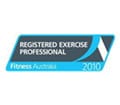

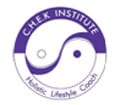
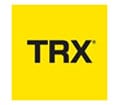
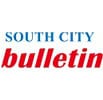

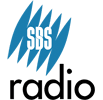

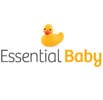




[…] Interested in more preventative strategies?? Check out our other articles – Immune boosting for flu symptoms […]